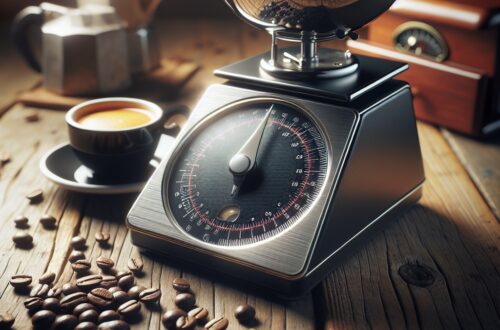“`html
The Ultimate Guide to Coffee Grinders: Exploring Mechanisms, Types, and Techniques for Perfectly Ground Beans
1. Introduction to Coffee Grinders
When it comes to brewing the perfect cup of coffee, the grind size and consistency are as crucial as the quality of the beans themselves. Whether you’re a casual coffee drinker or an aficionado, understanding the mechanics behind coffee grinders can significantly elevate your coffee experience.
Coffee grinders are essential in ensuring that you achieve the perfect grind for various brewing methods. From burr to blade grinders, each type has its benefits and drawbacks. Understanding these can help you make an informed decision to get the most out of your beans.
The growing demand for high-quality grinders underscores their importance in the coffee community. Investing in a good grinder can make all the difference between a mediocre and an outstanding brew. Besides the obvious improvement in taste, a quality grinder offers more control over the consistency and coarseness of the grind, which is crucial for different brewing techniques.
2. Understanding Burr Grinders
Burr grinders are renowned for their ability to produce a consistent grind size. But what exactly are they, and how do they work? Essentially, burr grinders use two revolving abrasive surfaces, known as burrs, to crush the coffee beans.
There are two primary types of burr grinders: conical and flat plate. Conical burr grinders feature a cone-shaped burr that sits inside a ring-shaped burr. The beans fall between the burrs and are crushed, resulting in a uniform grind. Flat plate burr grinders, on the other hand, use two horizontally aligned plates to crush the beans.
One of the key advantages of burr grinders is their ability to produce a consistent grind size. This consistency leads to better flavor extraction, as each coffee particle extracts at the same rate. This is crucial for brewing methods like espresso, where even a slight variance in grind size can impact the flavor.
Burr grinders can be more expensive than their blade counterparts, but the investment is often worth it for coffee enthusiasts. With the right maintenance, a good burr grinder can last for many years, delivering consistently delicious coffee.
3. Exploring Blade Grinders
Blade grinders, unlike burr grinders, use rotating blades to chop the coffee beans. They are generally more affordable and are a good entry-point for those new to the world of coffee grinding. However, they come with a few drawbacks.
One of the main issues with blade grinders is their inconsistency. The chopping action can result in uneven particle sizes, which can affect the extraction process. For example, some particles may over-extract and become bitter, while others may under-extract and remain acidic.
Despite these drawbacks, blade grinders have their place, especially for those who are just starting out or who prefer a quick and affordable grinding solution. They are particularly suitable for brewing methods that are less sensitive to grind size, such as French presses or percolators.
4. Importance of Grind Consistency in Coffee Brewing
The grind size of your coffee beans plays a crucial role in flavor extraction. Here’s a comparative analysis of different grind sizes:
| Grind Size | Texture | Ideal Brewing Method | Brewing Time |
|---|---|---|---|
| Coarse | Chunky, similar to sea salt | French Press, Cold Brew | 4-12 minutes |
| Medium | Smooth, similar to granulated sugar | Pour Over, Drip Coffee | 3-5 minutes |
| Fine | Powdery, similar to flour | Espresso, Aeropress | 20-30 seconds |
Consistency in grind size is crucial for achieving the perfect cup of coffee. Inconsistent grind size can lead to uneven extraction, resulting in either over-extracted or under-extracted coffee. Investing in a high-quality grinder can help you achieve consistent grind size and improve the overall flavor of your coffee.
5. Cost Considerations for Coffee Grinders
When it comes to coffee grinders, the initial investment can vary widely. Blade grinders are generally more affordable, while burr grinders tend to be more expensive. However, the long-term benefits of a burr grinder often justify the higher cost.
Blade grinders can be a good entry-point for beginners. They are affordable and easy to use, making them a popular choice for those just starting out. However, the lack of grind consistency can affect the overall flavor of your coffee.
On the other hand, burr grinders offer superior grind consistency, leading to better flavor extraction. While they may be more expensive upfront, investing in a burr grinder can save you money in the long run by producing consistently delicious coffee.
6. Grinding Techniques and Tips for Perfect Coffee
Choosing the right grind size for your brewing method is crucial for achieving the perfect cup of coffee. Here are some tips to help you get started:
- For French press or cold brew, use a coarse grind.
- For pour over or drip coffee, use a medium grind.
- For espresso or Aeropress, use a fine grind.
Whether you’re using a burr grinder or a blade grinder, it’s important to experiment with different grind sizes and brewing methods to find what works best for you.
Investing in a quality grinder and experimenting with different grind sizes can significantly improve the flavor of your coffee. For more coffee tips and accessories, visit here.
“`
Shop at Breville now!
https://breville.oie8.net/oqDqrE
Shop Coffee grinder at Amazon now!
Click here!





